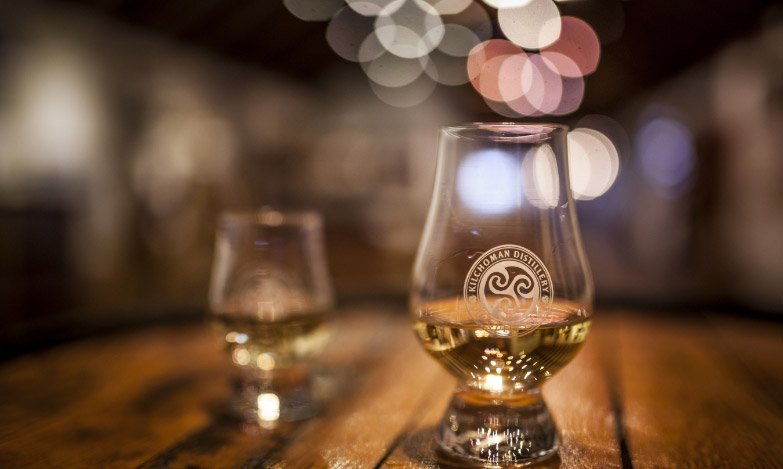Featured
What influence does peat have on Single Malt Whisky?
February 27, 2023Scotland, and more precisely, Islay, has long been associated with producing heavily-peated styles of Single Malt whisky, but when does that renowned flavour and influence of peat smoke become part of the whisky making process and when is the PPM content measured?
If you are, or have been, fortunate enough to visit Kilchoman Distillery on Islay, you will see that to produce our 100% Islay releases, we’re able to not only grow our own barley on site at the farm surrounding the distillery but we’re unique in that we also malt our barley on site at the distillery using traditional floor maltings; this is a key part in being Islay’s Farm Distillery and ensuring that 100% of the process is carried out at the distillery, on Islay.
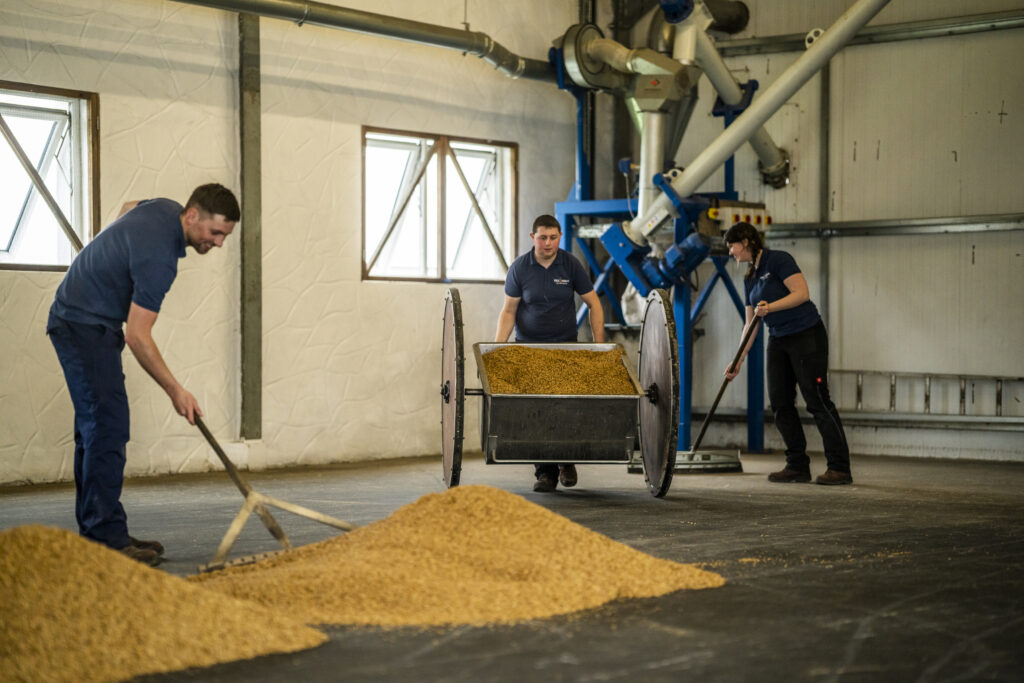
The peated malt used to create our iconic whiskies – whether it be using our traditional floor maltings at the distillery or barley that we purchase from the commercial maltings – the concept is the same; we want to steep, germinate, and kiln the grains of barley in order for them to record a parts per million (PPM) content. You can read more about our malt floor and what goes on, here.
Often, the assumption is that the PPM is measured in the final spirit however as an industry standard, it is measured in the malted barley. This allows for a level of consistency across all producers as multiple factors throughout the production can reduce the PPM total in the bottled spirit. For Kilchoman, this can be tested on site at the distillery however we will send samples of the malted barley to a third party whereby the malt will be analysed for quality and control purposes.
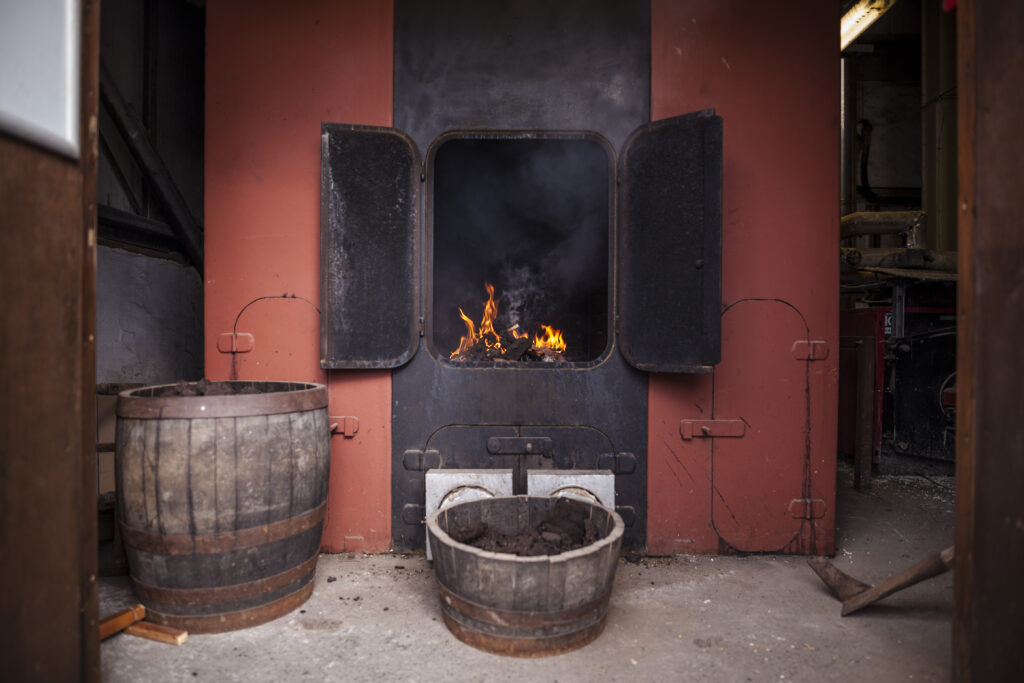
Once steeping and germination on our malt floor have taken place and the distillery team are happy with the quality of grain, kilning is used to stop further germination ensuring we capture the necessary starches required to eventually convert to alcohol during fermentation. It is at this stage that we use peat to influence our malt, producing a distinct ‘smoky’ aroma and taste. Kilning is the point at which our barley is spread out evenly on a mesh floor in the upper part of the kiln, 5 meters above the peat fire. Hand cut Islay peat will be burned on the fire below, allowing the peat smoke to rise and immerse itself into the green malt.
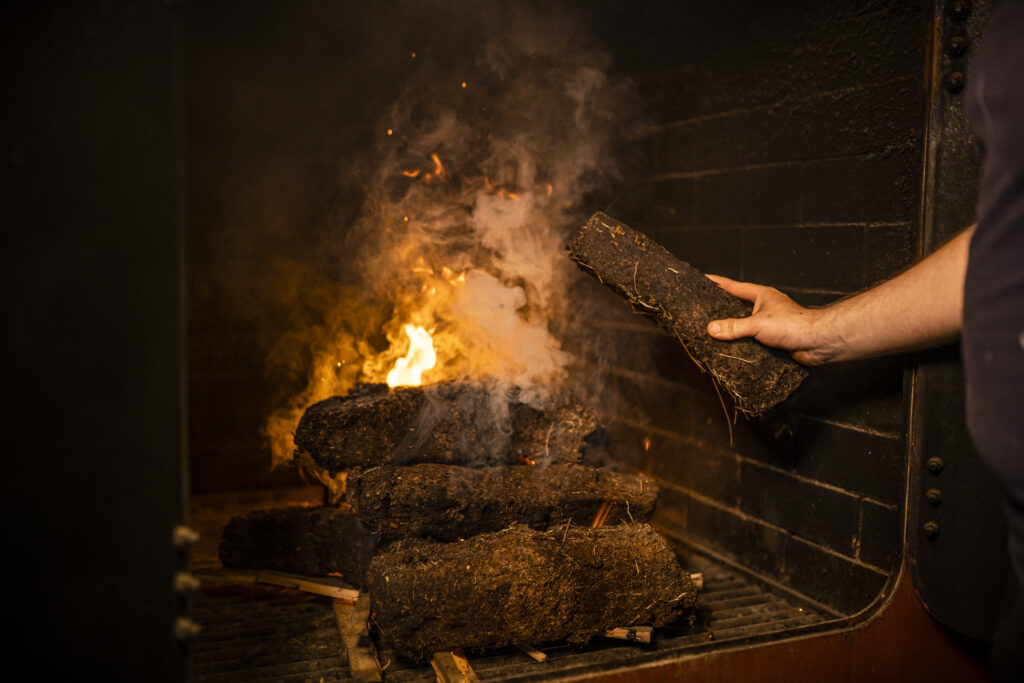
Temperature, airflow, and time are all important factors considered when determining the final PPM as they all have an effect on the overall influence on the malt. A distiller, at this point, can specify the peating level they require.
To aid consistency, at Kilchoman for our 100% Islay Edition, we burn hand cut, Islay peat under controlled conditions for 15 hours. This in turn results in a phenolic level of 20PPM (approx.). Our 50ppm malt is ultimately held under these conditions for a longer period of time, resulting in a higher PPM figure. Increasing the final PPM figure of malt is achieved by lengthening the amount of time the malt spends under the conditions provided by the kilning phase, balancing the temperature, moisture content and the level of smoke being created by the quantity of peat used as well as the rate of burning of the peat. It is important to note that if we were to use warm air (rather than peat) in the kilning process, this would create an unpeated whisky.
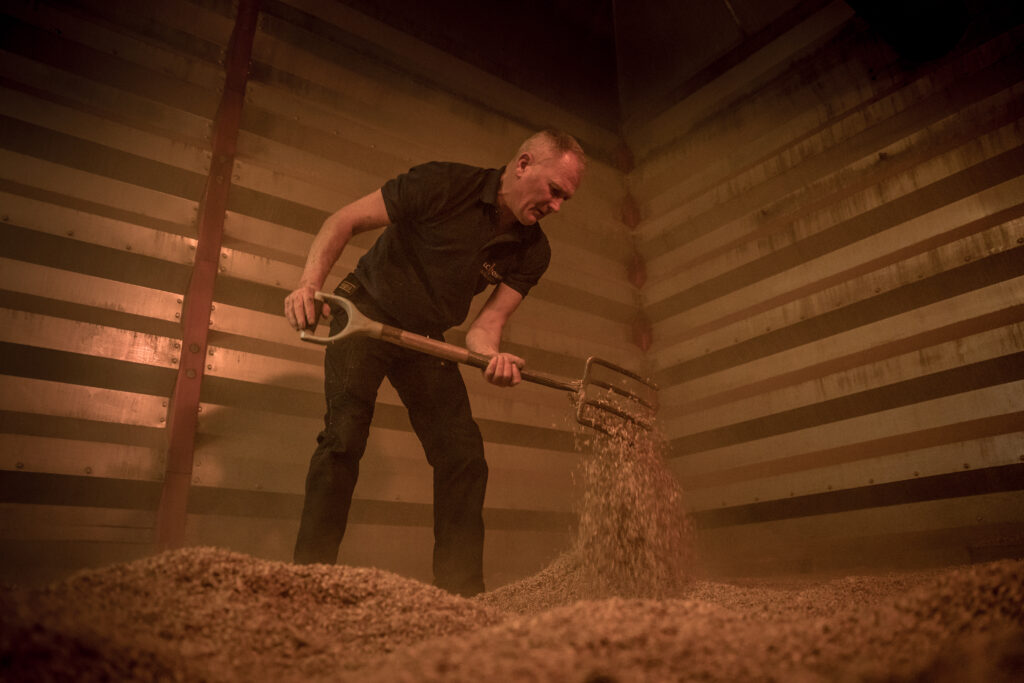
So, does the source of the peat influence the whisky? Each part of the whisky making process has an impact on the final flavour created and the source of the peat is no different. For example, if we were to test highland peat against Islay peat, both would affect the malt profile drastically. At Kilchoman, it’s important that we produce peated malt using peat only from Islay. For our 100% Islay edition, our peat is sourced from a nearby peat bank, managed by Derek Scott, Bottling Hall Manager, while our commercial malt uses peat from the east side of Islay, near Port Ellen resulting in two styles of peated spirit (20PPM and 50PPM). Derek and James take a walk through the malting and peating process here.
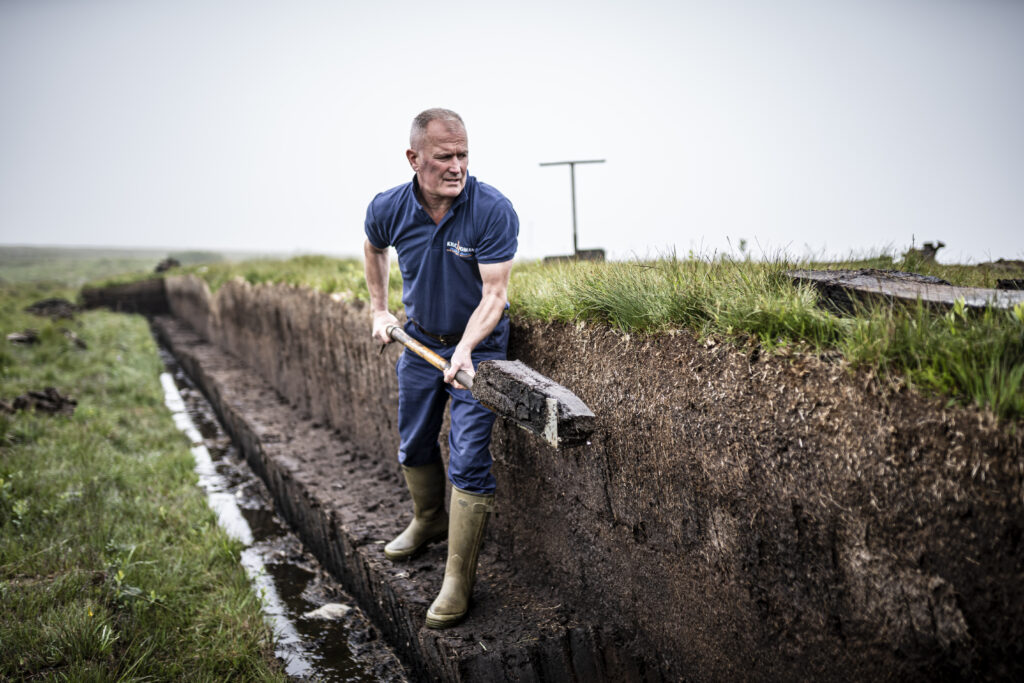
How does all this impact our whisky that’s being tasted around the world? Often during tastings, you will hear the speaker discuss the smoky and peaty characteristics found within the whisky (if it’s a peated malt) but both profiles can be individually defined. It’s easier to note the profile of smoke than it is peat, whether that be through nosing or tasting. Below are a few typical notes to look for:
- Smoky – dry/wet smoke, bonfire smoke, woody and ashy
- Peaty – medicinal (TCP, iodine, tar, seaweed), sulphur and mossy/earthy soil
A mix of the above is possible and when it comes to what you taste, it’s completely individual. Focussing on Kilchoman Single Malt, our aim is to continue producing a classic Islay heavily peated malt but with an elegant balance allowing for notes from the malt, fermentation, distillation, and cask type to play a significant part in the final product.
Click here to stay up to date with all things Kilchoman and be amongst the first to know about new Limited Edition and Exclusive Club Release bottlings!
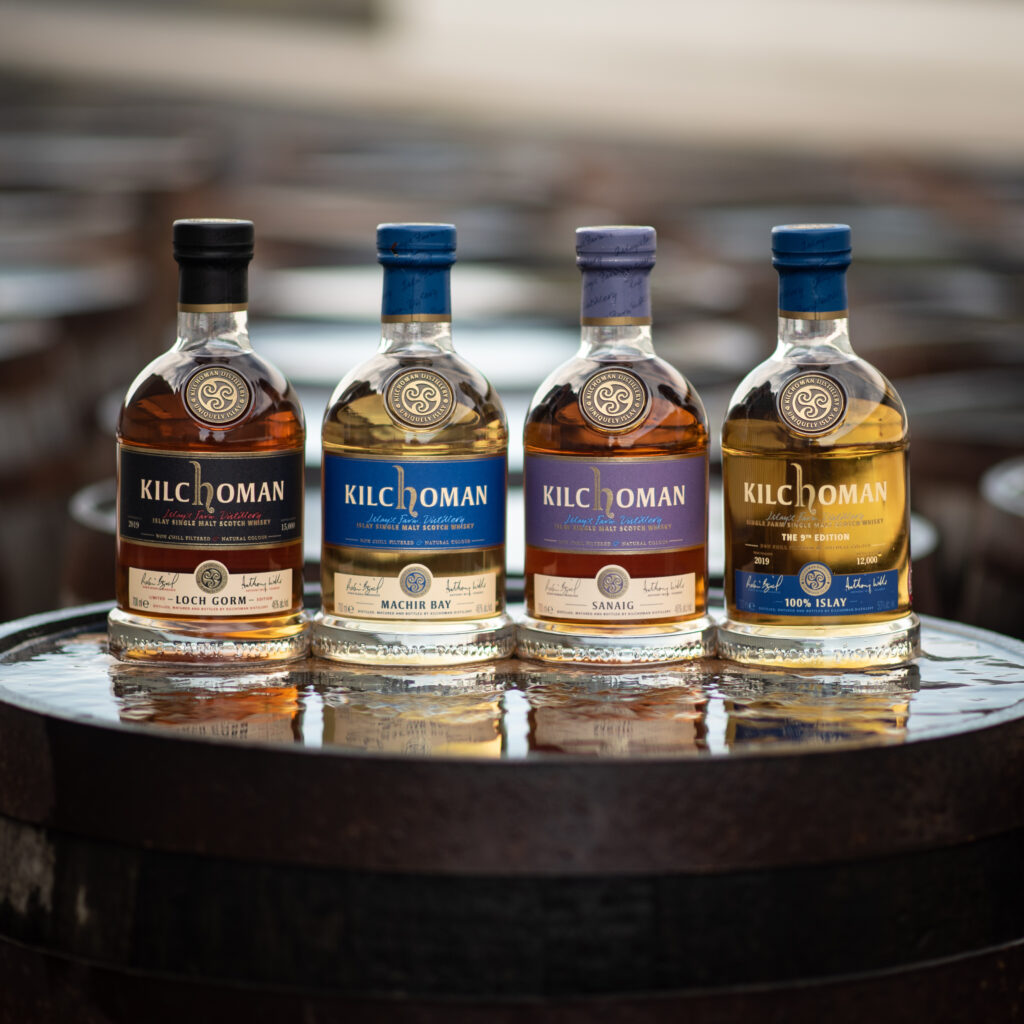
READ NEXT
Featured
Kilchoman Fèis Day 2025
The countdown to Fèis Ìle 2025 is well underway, and we can’t wait to welcome you for another fantastic celebration on Thursday, 29th May 2025! We’ve got the drams ready for our masterclasses and open tastings, alongside an exciting line-up of tours, activities, live music, and entertainment throughout the day.…
April 1, 2025

